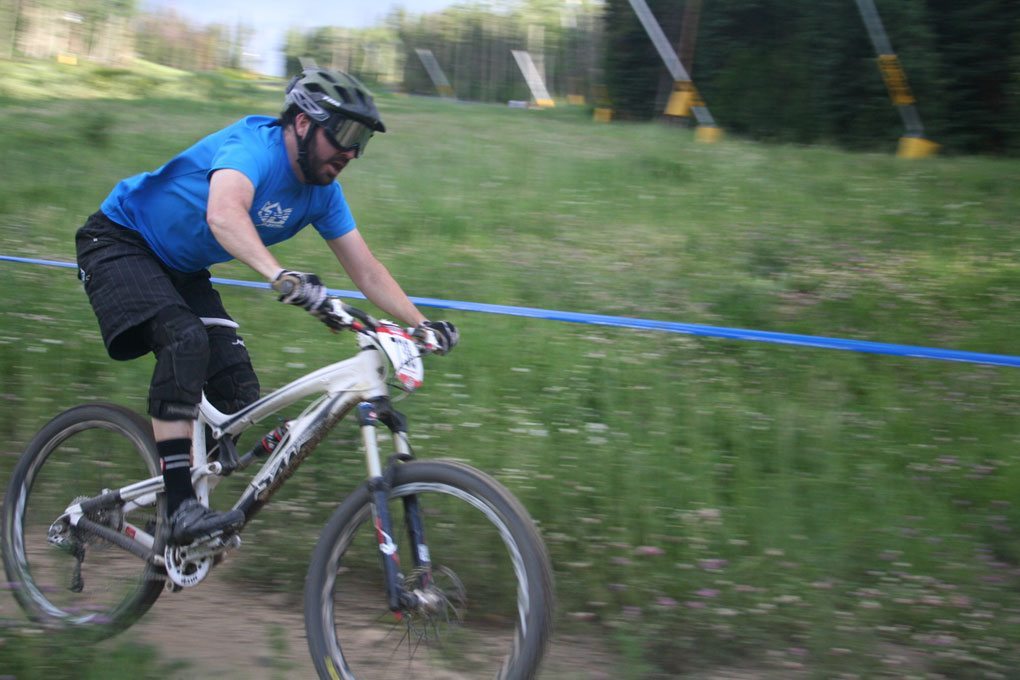Small bump performance was good with no noticeable pedal feedback in the middle ring. As to be expected with VPP2, there was a touch of feedback when getting deep into travel while pedaling in the small ring, but it wasn’t a deal breaker by any means.
Hammering into mid-climb ledges yielded good results: the bike popped up and maintained momentum and traction. Then I ripped down a stutter-bumped Zippity Doo Dah, which brought on the giggles, bordering on cackles. The lateral and torsional stiffness of the frame allowed for committed arcs through sweeping bumpy turns.
Sizing can be an issue with Santa Cruz frames (their top tubes tend to run a bit short compared with other brands), but after discussing with Ariel the different potential uses for the bike, I decided a large would be best. I was looking for a primary trail bike that would also suit my DH racey ways, and we determined that while a medium would make a great park and play bike, a large with short stem would be a bit more stable at mach looney speeds and more comfortable on big, long alpine rides. I like mach looney speeds and long rides, so large it was. The longer wheelbase gave a bit more stability, and less seatpost put me a bit lower “in” the bike. A medium would no doubt be a fun ride, but I think my back would disagree on longer rides, and climbing would suffer.
Thirty-six hours later, I placed my order.
After my first few rides on my own rig, however, I wondered if I had made a horrible mistake. The toothy, rocky chunder of my favorite daily trails above Golden, Colorado, seemed to be making a mockery of the rear suspension. Sure, it cornered like crazy, and its stiffness allowed me to pick absurdly precise lines (and actually remain in said lines until shifting to other exact locations), but when centered and plowing into embedded chunk, the back end wanted to bounce around and pitch me forward rather than absorb.
I was also unable to pop off features like I used to. I love me a good bump-jump, and there was no bump-jumping, only scary high-speed nose wheelies. Frustrating, to say the least. Terrifying, to say the most.
I should mention I was suspended by a Lyrik 2step and Fox RP23. Slight sag adjustments to the RP23 didn’t seem to fix this problem, so I started messing with my fork. Thankfully, RockShox has kept adjustable high-speed compression damping (probably my favorite dampening) available in their single crown lineup. I buried the HS knob, then backed it off three clicks.
Voila! High-speed compression is a beautiful thing. Not only does it make for sweet bump-jumps, it also keeps the fork from blasting through travel, helping maintain more pressure on the back of the bike, a much more balanced feel. The rear wheel instantly felt more planted, absorbing chunder rather than pinging off it.

This was a huge improvement in the ride quality of the frame, and a somewhat unexpected result from a fork adjustment. As I got more comfortable and dialed in on the Nomad C, the precise handling became even more apparent. This is a stiff bike. It just flat out doesn’t deflect, allowing the rider to pick a line and hold it. Big-ass rock in the middle of that natural berm you’re hooked into and that your life depends on? No problem. Have faith, stay loose, and hold on.

sick bike sooo sick buy this 1 mil% if u ever see this bike burns urs and buy this so light so fast so good so nice the best enduro i ever owned.